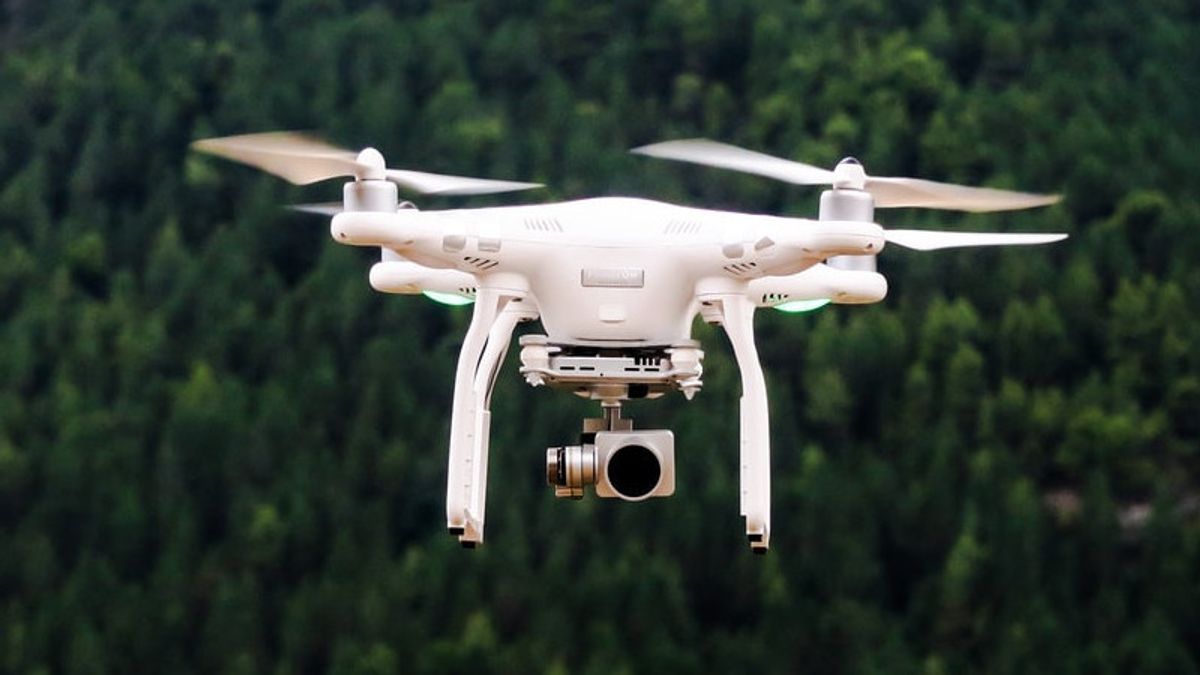JAKARTA - Drones are increasingly popular devices for recreational and commercial use. Drones are now found in various industries and are used for transporting goods and surveillance purposes.
As the number of drones in the sky increases, the question of safety becomes even more important. Apart from privacy concerns, malicious drones have the capacity to damage people and property if directed at them.
The question is, can drones be hacked? If so, how does a hacker do it? Let's find out one by one.
Can Drones Be Hacked?
Similar to computers, drones are also potential targets for hacking. A drone controlled using radio waves means that a potential attacker doesn't even need physical access to the drone to control it.
While it has security features and is believed to be less frequently hacked, drones are also a device that is vulnerable to hacking. Anyone who owns and uses a drone should be aware of this.
One example of a drone hacking case is what happened in 2011. At that time, a US military drone was allegedly hacked in Iran as reported by the BBC. The attackers apparently managed to trick the drone into thinking it was somewhere else and then land it on Iranian soil.
How Can Someone Hack Drones?
A drone can be hacked by intercepting signals between the drone itself and the person controlling it. This is not possible if the signal is encrypted, but many drones use unencrypted communications.
This allows a hacker to use a packet sniffer to determine how communication occurs. The attacker can then impersonate the drone operator and begin issuing orders.
GPS spoofing is also often used for this purpose, involving giving drones false coordinates. The drone can then be convinced to fly to the attacker's preferred location.
Why Would Someone Hack Drones?
Drones can also be hacked for a variety of different reasons. For example, in some cases someone might just want to break it. Perhaps, the attacker didn't like what the drone was doing.
More professional hackers might try to physically steal the drone. After accessing the controls, they could easily order it to land next to them.
Drones can also be hacked by bad guys to steal their information. The attacker might watch the camera feed or download any files stored on the device.
How to Protect Your Drone From Hacking
If you own a drone, and you've considered all the possibilities VOI listed above, you can take a lot of precautions to ensure that your device isn't hacked.
Below, VOI has listed a selection of options you can use.
Protect Your Controller
If you're serious about protecting your drone, it's important to protect the devices that control it. If the device is exposed to malware, your drone is at risk. One option is to use a special device for your drone.
Another option is to be very careful what you download to your phone or computer and install a reputable antivirus program.
Update Your Drone Software
If your drone manufacturer provides software updates, you should ensure that these updates are installed immediately. These updates often include fixes for potential security issues.
Install Security Software
Depending on the type of drone you have, it may be possible to add software that makes it more difficult to hack. Hacking threats are real in several industries, and many products have been released to protect against them.
Watch Where You Fly
It is possible to pick up drone signals from up to a mile away. Therefore, when you fly in an urban area, you significantly increase the number of people who could potentially try to control it. Some people also advise against flying the same route over and over again.
Apply Return to Home
Most drones have a Return to Home feature. Once turned on, this will make your drone return to a certain address if it loses signal or runs out of power. This feature was created because drones often lose signal accidentally. It can also provide useful protection against signal interference.
Drones Are Also Used by Hackers
Drones are not only a target for hackers, but they can also be used as a tool by hackers. Many hacks require the attacker to be within a certain distance of the target. Drones are potentially ideal for this purpose.
Drones can be used to search for unsecured networks. If found, hackers can access confidential information or plant malware. Drones can also be used to store the Raspberry Pi in a safe location, such as on top of a building. The device can then be used to create a malicious Wi-Fi hotspot.
The English, Chinese, Japanese, Arabic, and French versions are automatically generated by the AI. So there may still be inaccuracies in translating, please always see Indonesian as our main language. (system supported by DigitalSiber.id)













